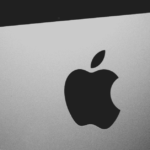I. Introduction
Overview of Samsung
Samsung, founded in 1938, has evolved into a global technology conglomerate. Known for its wide range of products, including electronics, semiconductors, and home appliances, Samsung plays a crucial role in shaping modern technology and consumer experiences.
Historical Background
Samsung was founded by Lee Byung-chul as a trading company. Over the decades, it has navigated numerous challenges and achieved significant milestones, becoming a leader in multiple industries.
II. Founding and Early Years
1930s-1940s: Foundation and Early Ventures
Samsung started as a trading company, dealing in groceries and local produce. The company quickly expanded into various sectors, laying the groundwork for its future diversification.
1960s-1970s: Entry into Electronics
The launch of Samsung Electronics in 1969 marked the company’s entry into the electronics industry. Early products included black-and-white televisions and home appliances, setting the stage for future growth.
III. Major Developments and Expansion
1980s: Global Expansion and Innovation
The 1980s saw Samsung expanding into international markets and focusing on innovation. Key product launches and technological advancements helped Samsung establish a global presence.
1990s-2000s: Technological Advancements
During the 1990s and 2000s, Samsung made significant strides in mobile technology, introducing groundbreaking products like the Samsung Galaxy series. These advancements positioned Samsung as a leader in the mobile industry.
IV. Key Products and Innovations
Mobile Devices
Samsung’s mobile devices have evolved significantly, with the Galaxy series redefining the smartphone market. The company’s focus on cutting-edge technology and user experience has driven its success in this segment.
Consumer Electronics
Samsung is a pioneer in consumer electronics, offering innovations in TVs, home appliances, and audio devices. The company’s advancements in display technology, such as QLED and OLED, have set industry standards.
Semiconductors and Components
As a major player in the semiconductor industry, Samsung produces essential components for various global technologies. Its contributions to memory chips, processors, and display panels are critical to the tech ecosystem.
Software and Services
Samsung has expanded its software ecosystems and services, integrating them seamlessly with hardware products. Offerings like Samsung Pay, SmartThings, and Bixby enhance the user experience across devices.
V. Corporate Culture and Management
Leadership and Vision
The influence of founder Lee Byung-chul and his successors has been pivotal in shaping Samsung’s vision and strategy. Current leadership continues to drive innovation and global expansion.
Innovation and Design Philosophy
Samsung’s commitment to innovation and design is evident in its product offerings. The company’s focus on user-centric design and technological advancement has been a key factor in its success.
Corporate Social Responsibility
Samsung prioritizes environmental sustainability and community engagement. Initiatives include reducing carbon footprint, promoting recycling, and supporting education and healthcare programs globally.
VI. Financial Performance and Market Position
Revenue and Profitability
Samsung’s financial growth is driven by diverse revenue streams, including electronics, semiconductors, and services. It consistently ranks among the top global companies in terms of profitability.
Stock Performance and Valuation
Samsung’s strong stock performance and market valuation reflect its robust financial health and investor confidence. Key milestones, such as reaching high market caps, underscore its market influence.
Global Market Presence
Samsung’s expansion into international markets has solidified its global presence. Despite competition and market challenges, the company maintains a strong foothold in various regions.
VII. Challenges and Controversies
Legal and Regulatory Issues
Samsung has faced several legal battles and antitrust concerns. The company navigates complex global regulations to maintain compliance and mitigate legal risks.
Labor Practices and Supply Chain
Criticisms regarding labor conditions in Samsung’s supply chain have prompted efforts to improve transparency and labor practices. The company is committed to addressing these issues.
Product Issues and Criticisms
Samsung has experienced product failures and recalls, such as the Galaxy Note 7 battery issue. The company’s proactive responses and focus on quality assurance are crucial in maintaining consumer trust.
VIII. Future Outlook and Prospects
Upcoming Products and Innovations
Speculations about future products, including advancements in AI, 5G, and foldable devices, highlight Samsung’s ongoing commitment to innovation.
Strategic Initiatives and Goals
Samsung’s strategic focus includes expanding its presence in emerging technologies like artificial intelligence, Internet of Things (IoT), and autonomous vehicles.
Challenges Ahead
Potential challenges include market saturation, intense competition, and geopolitical risks. Samsung’s ability to innovate and adapt will be key to overcoming these obstacles.
IX. Conclusion
Summary of Samsung’s Journey
Samsung’s journey from a trading company to a global technology leader is marked by significant milestones and achievements. Its impact on various industries is profound.
Samsung’s Legacy and Impact
Samsung’s influence on technology and consumer behavior is enduring. The company’s dedication to innovation and quality continues to shape the future of technology.
Final Thoughts
Looking ahead, Samsung’s potential for growth and its commitment to innovation ensure its place as a pivotal player in the global technology landscape. The company’s legacy and future prospects remain strong.

